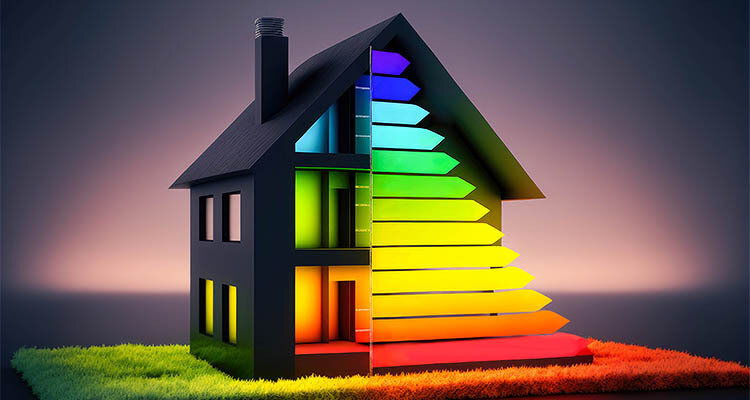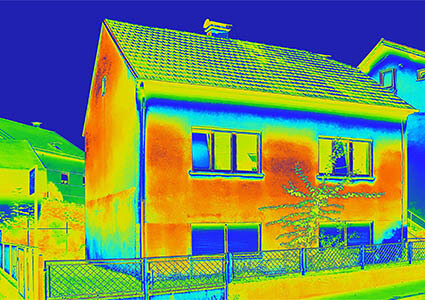
Navigating the retrofit challenge on the journey to net zero
The government is proposing to relax planning laws to build more homes with the focus on ensuring construction delivers greater sustainability. This is to be welcomed, but does not address the challenge of the many buildings that already exist with poor energy-efficiency. Whilst our need to build more new homes is fully documented, there are many of the nearly 30 million existing homes which urgently need improved energy efficiency. Implementing a long-term retrofit strategy is essential to achieve our carbon reduction targets.
The UK has a formidable challenge and bears the weight of history. 5.8 million homes were built before 1919 and over half of the existing stock were built before the first insulation requirements were added to the Building Regulations in 1965. As a result, these properties are in varying states of repair, with a wide range of different construction methods and materials, creating an enormous wastage of heat and energy. Consequently there is no simple, one-size-fits-all solution for retrofitting these properties.

A new regulatory environment
The recent announcement by the Prime Minister relaxing the steps on our journey to Net Zero, adds considerable doubt in our ability to meet these challenges within the allotted timeframe. Higher standards for energy efficiency were introduced for new build housing – the new and updated Part L of the Building Regulations for England came into force in June 2022, followed by new energy efficiency updates in Scotland and Wales in November and December 2022 and the Future Homes Standard is still expected for 2025 – all new homes as well as other buildings must be built to ultra-high levels of energy efficiency. Unfortunately, there is very little to promote and deliver the improvements needed for existing buildings, with the PM stating ‘no households will be forced to make their homes more energy efficient now’.
Prior to this latest announcement, the government had a vague aim of upgrading existing homes to EPC C by 2035, but only where ‘practical, affordable and cost effective’. However, it then scrapped the requirement for landlords to upgrade their properties to an EPC grade C by 2035. These contradictory statements indicate no real strategy is in place and it is difficult to see how the necessary improvements can be achieved.
The Heat and Building Strategy published in 2021 expands on the detail of heat in buildings, but there is little on improving energy efficiency, reducing demand or the essential policy needed to support any largescale approach to mass retrofitting.
If we are to move to a net zero carbon country by 2050 (2045 in Scotland), it will be vital to make improvements to homes and other buildings to reduce emissions. This means installing a whole range of energy saving measures; from better insulation and more efficient appliances, to replacing fossil fuelled boilers with low carbon alternatives such as heat pumps.
Insulation is key
PIR and PUR insulation has an invaluable role in upgrading our poorly performing housing stock and ensuring a sustainable future. Good insulation is essential and is one of the simplest and most cost-effective ways to reduce energy demand and cut CO2. The better or lower the U-values in walls, floors and roofs, the less heat that is lost, resulting in enhanced thermal performance which in turn will help to deliver the standards required.
Highly effective and incredibly versatile, PIR and PUR insulation solutions are available in a range of forms including boards and blocks, cavity injected, composite panels, as well as a spray and panel insulation. The use of PIR insulation, with lambda values as low as 0.022 Wm/.K means it is possible to achieve the highest insulation values using the minimum thickness of material compared with traditional insulants.
Building passport
Another challenge in raising energy efficiency standards is the lack of ability to measure and demonstrate a building’s performance over its lifetime. Residential and commercial properties could benefit from a building passport, with regular checks being made, normalising the concept that buildings, like vehicles, must be judged over time and meet certain standards. This could also provide full traceability of products and services installed into a building, so that when it is bought/sold or renovated an accurate and informative log is kept.
Such a passport could contain building-related information on elements such as energy consumption/production, maintenance and building plans, and could be transferable between building owners. This digitalisation could go way some to ensuring buildings are sustainable and perform to the standards intended.
Retrofitting insulation in our leaky homes is a vital instrument in reducing heating demand, cutting CO2 emissions whilst addressing fuel poverty and improving comfort and wellbeing. Only if this is done will there be a long-term asset that reduces energy usage and can be confidently passed on to future generations.
Simon Storer
www.insulationmanufacturers.org.uk
Insulation Manufacturers Association (IMA) is the Trade Association that represents both the Polyisocyanurate (PIR) and Polyurethane (PUR) insulation industry in the UK. Its members manufacture rigid insulation that provides around 40 percent of the total thermal insulation market in the UK. IMA’s membership comprises all of the major companies in the industry, including manufacturers of finished PIR and PUR insulation products, as well as suppliers of raw materials and associated services.